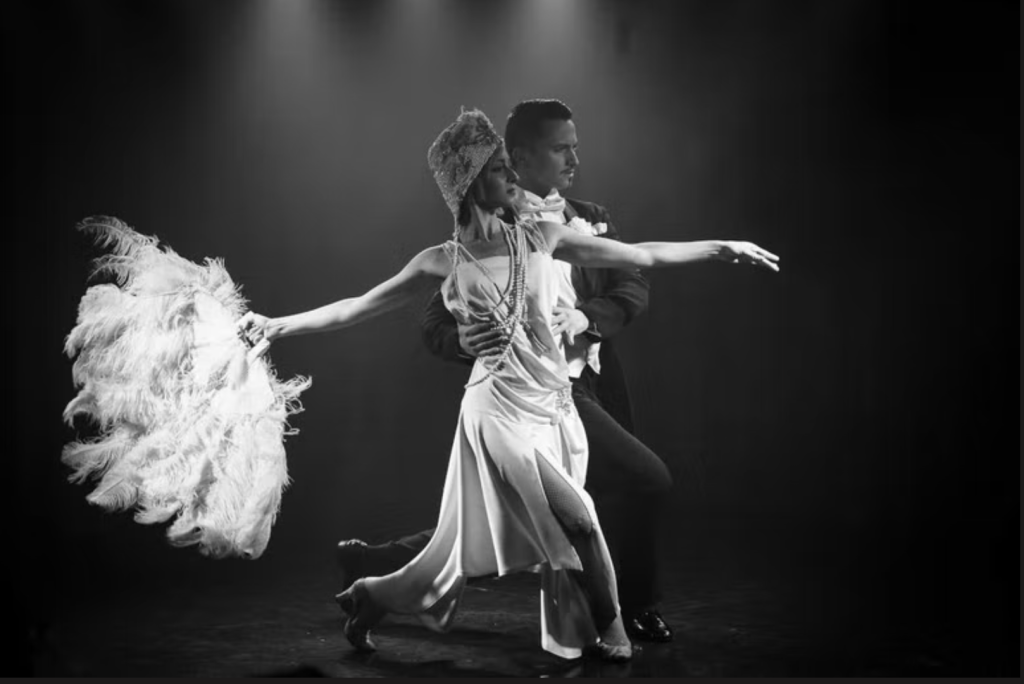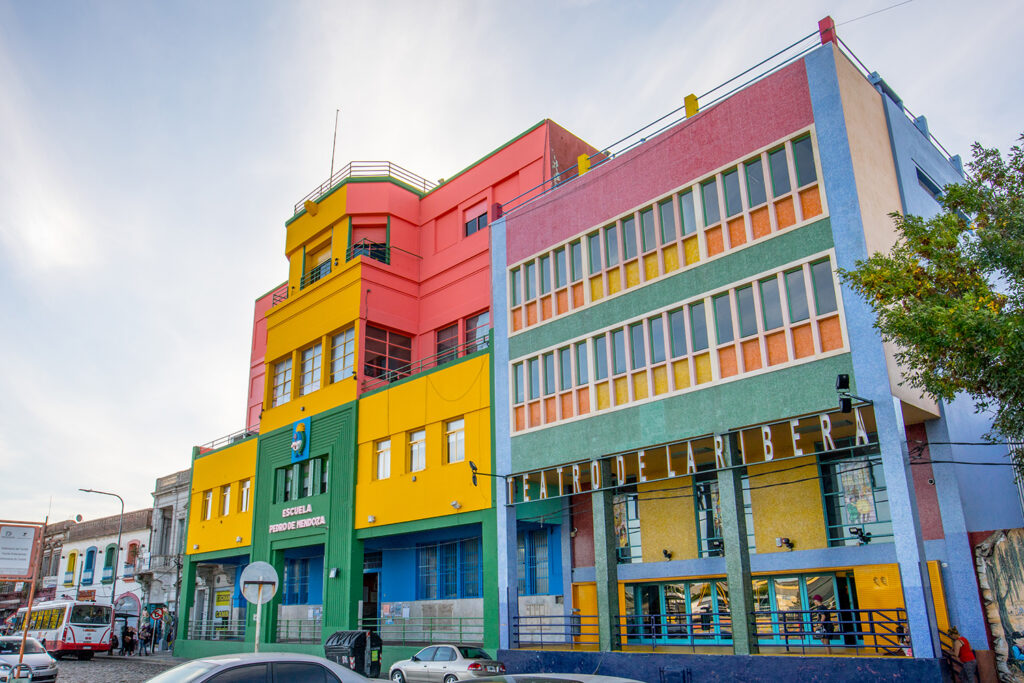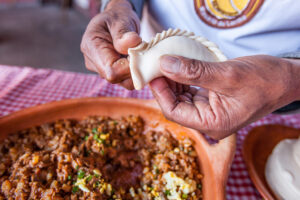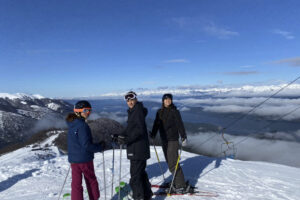Essential guide: Buenos Aires

Buenos Aires is a dynamic and lively city with a rich cultural heritage and a unique blend of old-world charm and modern sophistication. Buenos Aires is also famous for its tango dancing and nightlife, with many clubs and bars offering live music and dancing until the early hours of the morning. The city’s numerous parks and plazas provide a peaceful break from the bustling streets, and the waterfront area of Puerto Madero offers a modern and sophisticated dining and entertainment scene.
Here is some essential information about vibrant and cosmopolitan, Buenos Aires that may be helpful for travelers planning a trip to the birthplace of Tango.
LANGUAGE
The official language of Argentina is Spanish, and it is the primary language spoken in Buenos Aires. English is also widely spoken in popular districts visited by tourists such as Retiro, Recoleta, Palermo, Belgrano, San Telmo, Puerto Madero and downtown Buenos Aires.
CURRENCY
The currency used in Buenos Aires is the Argentine peso (ARS). It is recommended to carry some cash as not all places accept credit cards. Also, it is way more convenient to pay in cash than with credit cards due to the favorable US dollar exchange rate.
TIME ZONE
Buenos Aires is in the GMT-3 time zone.
CLIMATE
The best time to visit Buenos Aires is during the spring (September to November) and fall (March to May) seasons, when the temperatures are mild and the crowds are fewer than during the peak summer months of December to February.
During the spring and fall, the weather in Buenos Aires is typically pleasant, with temperatures ranging from the mid-60s to mid-70s Fahrenheit (15-25 degrees Celsius). This makes it comfortable for outdoor activities such as walking tours, exploring parks and gardens, and enjoying the city’s many outdoor cafes and restaurants.
During the summer months (December to February), temperatures can soar into the 90s Fahrenheit (32-35 degrees Celsius), and the city can be quite humid. This can make it uncomfortable for outdoor activities, but it is also the time when many cultural events and festivals take place.
The winter months (June to August) in Buenos Aires are mild but can be quite chilly, with temperatures ranging from the mid-40s to mid-50s Fahrenheit (7-13 degrees Celsius). However, this can be a good time to enjoy the city’s indoor activities, such as museums, theaters, and tango shows.

SAFETY
Buenos Aires is generally a safe city, but like any big city, it’s important to take precautions to avoid pickpocketing and other types of crime. Avoid carrying large sums of cash or valuable items in public places.
TRANSPORTATION
Public transportation is a great way to get around Buenos Aires, and there are several options available, including buses, subways, and trains. Here are some tips on how to use public transportation in Buenos Aires:
Get a SUBE card: The SUBE card is a rechargeable electronic card that can be used on buses, subways, and trains. You can buy a SUBE card at kiosks or subway stations, and you’ll need to load it with credit before using it.
Understand the fare system: The fare for public transportation in Buenos Aires is based on distance, so the farther you travel, the more you’ll pay. You can check the fare for your trip by using the SUBE card reader on the bus or subway.
Use the subway: Buenos Aires has six subway lines that cover most of the city, and it’s a fast and efficient way to get around. The subway runs from 5am to 10pm, and until midnight on Fridays and Saturdays.
Take the train: There are several train lines that connect Buenos Aires with its suburbs and neighboring cities. This can be a good option if you’re planning a day trip or excursion outside the city.
By following these tips, you can easily navigate the public transportation system in Buenos Aires and get around the city efficiently and affordably.
Uber operates in Buenos Aires, but the service has had a complicated history in Argentina due to legal disputes with taxi unions and regulations imposed by the government. In 2016, Uber was suspended in Buenos Aires, but it was able to resume operations in 2018 after a new regulatory framework was established.
Today, Uber operates in Buenos Aires and is a popular option for tourists and locals who prefer the convenience of ride-hailing services. However, it’s worth noting that the service may be more expensive than using public transportation or traditional taxis, especially during peak hours or busy periods.
In addition to Uber, there are other ride-hailing services available in Buenos Aires, such as Cabify and Beat. It’s always a good idea to compare prices and options to find the best transportation method for your needs and budget.
ELECTRICITY – WHAT PLUG DO I NEED FOR ARGENTINA?
The voltage used in Buenos Aires is 220V, with a frequency of 50Hz.
It’s essential to carry adapters that are compatible with both types: Seek out a Type A/B to Type I (United States to Australia/NZ), and a Type A/B to Type C (United States to Europe). A great choice for your trip to Argentina is this Universal Adapter that will have you covered for both types of outlets you will encounter during your travels. Most 5-star-hotels have USB ports allowing you to charge up to 3 devices at once.
Most popular Food to try in Buenos Aires
Buenos Aires is known for its delicious food, and there are many popular dishes that you should try when you visit. Here are some of the most popular foods in Buenos Aires:
Asado: This is the Argentine version of a barbecue, where beef is cooked slowly over an open flame. Asado is a social event that is often accompanied by wine and good conversation. Some great options to try asado include:
- La Brigada: This is a classic parilla (steakhouse) in San Telmo that is known for its excellent asado. The restaurant has a traditional atmosphere, with vintage decor and a friendly staff.
- Don Julio: This upscale parilla in Palermo is a favorite among locals and tourists alike. The restaurant has a wide selection of meats, including some lesser-known cuts, and an extensive wine list.
- La Carniceria: This trendy parilla in Palermo is known for its creative twists on traditional Argentine cuisine. The asado here is top-notch, and the restaurant also has a great selection of wines and craft beers.
Empanadas: These are savory pastries that are filled with meat, cheese, or vegetables. They are a popular snack or lunch food in Buenos Aires and can be found at cafes, bakeries, and street vendors. Our favorite empanadas are found at “El Sanjuanino” in Recoleta district.
Milanesa: This is a breaded and fried cutlet of beef or chicken. It’s often served with mashed potatoes, salad, or French fries and is a popular dish in Buenos Aires.
Some places where milanesas are delicious are: Sottovoce, El Antojo and El Preferido de Palermo.
Pizza: Buenos Aires has a strong Italian influence, and pizza is a popular food here. Argentine pizza is typically thin-crust and loaded with cheese and toppings like ham, olives, and peppers. Our favorite pizzeria is El Cuartito.
Pizzeria El Cuartito is a legendary pizza restaurant located in Buenos Aires, Argentina. It was founded in 1934 and has been serving delicious pizza for nearly a century. The restaurant is located in the Recoleta neighborhood, close to many of Buenos Aires’ main attractions.
El Cuartito is famous for its pizza, which is made in the traditional Argentine style. The pizza is cooked in a wood-fired oven and features a thick, fluffy crust and plenty of toppings. The most popular pizza at El Cuartito is the fugazzetta, which is topped with onions and mozzarella cheese.
In addition to pizza, El Cuartito also serves a variety of traditional Argentine dishes, such as empanadas, milanesas, and choripan. The restaurant has a casual, friendly atmosphere and is a popular spot for both locals and tourists.
One of the most unique features of El Cuartito is its decor, which features vintage photos, posters, and memorabilia from the restaurant’s long history.
Tipping
It is customary to leave a tip of around 10% in restaurants, bars, and cafes in Buenos Aires. Many establishments in Argentina prefer to receive tips in cash. This is because cash tips can be immediately distributed to staff members, without having to wait for the credit card transaction to clear.
Some credit card companies in Argentina charge higher fees for small transactions, such as tips. This can make it more expensive for businesses to accept tips via credit card.
Dulce de leche:
It’s used in many Argentine desserts, including alfajores (shortbread cookies filled with dulce de leche) and panqueques con dulce de leche (crepes filled with dulce de leche). There are many places to try the best dulce de leche in Buenos Aires, but here are a few popular spots:
San Telmo Market: This historic market in the San Telmo neighborhood has several vendors that sell homemade dulce de leche. You can try different varieties and find the perfect one to take home.
Havanna: This popular cafe chain in Buenos Aires is known for its alfajores, which are cookies filled with dulce de leche. You can also buy jars of their delicious dulce de leche to take home.
La Salamandra: This artisanal dulce de leche brand has several locations in Buenos Aires and is known for its high-quality, all-natural products. You can try different flavors, such as chocolate or coconut, and buy jars to take home.
By keeping these essential information in mind, travelers can better prepare for their visit to Buenos Aires and enjoy all that this vibrant and exciting city has to offer.
Tip: The city of 48 neighborhoods can be intimidating to the first-time traveler. For this reason, we recommend taking a complete overview tour of the city that covers all major attractions of the city. In this way, you will be able to distinguish those districts you want to explore in greater depth on your own.
Take a guided tour of the Teatro Colón, one of the world’s most famous opera houses.
CONTACT US and a local professional guide will create a tailor-made itinerary based on your preferences.








No comment yet, add your voice below!